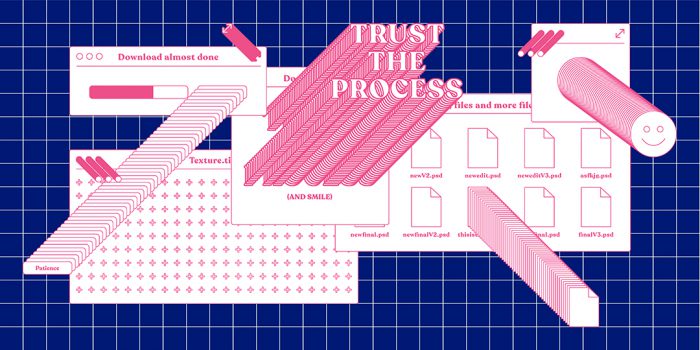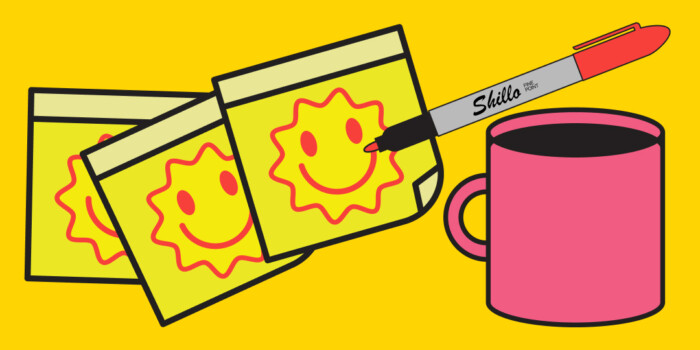Briefbox: What Should I Charge for my Design Services
Our friends at Briefbox are back with another stellar advice piece. This time we welcome James Ewin, Co-Founder of Briefbox and Creative Director of Orca Design. James offers advice on a pertinent issue for freelancers—how much to actually charge for that piece of design? Read on to hear how your design time equates to payment, overheads and taking into consideration the clients’ budget.
Don’t forget to check out the previous advice piece from Joel Rosen, Co-Founder and Creator of Briefbox as well as heading to the Shillumni section of our website for a discount code to try Briefbox services for yourself!
One of the most difficult questions to answer as a graphic designer is, how much should I charge for my design services? The reason this is so difficult is because there are so many variables that can effect the outcome. Sure, there’s a lot of information out there to help you establish what the industry standard hourly rate is, but how does this relate to you, your ability and your overheads? How can you work out what your time is worth? I’m going to try and break this down into a few main focal points which all need to be considered before making a decision.
What is the industry standard?
Before you do anything else, you need to establish what the industry standard hourly rate is. Now this varies from country to country, and even from city to city, so make sure you understand the rates relative to your geographical location.
How experienced am I?
Now ask yourself, how experienced am I? If you’re just starting out, then of course, you can’t charge the industry standard rate. However, you still own a skill and you should still be paid for your time, so evaluate your skill sets and your value based on how long you think a project would take you.
Ultimately, the quicker you can do a project, the more you can charge.
What are my overheads?
Now work out your annual overheads. This can be done by adding the total cost of running your studio, to your total cost of living (or the annual salary you expect to receive). Now divide this amount by the total amount of working hours in a year, and you have your base hourly rate. This is a ballpark figure which can be adapted based on all the other project variables.
How long does it take me to design?
This is a fairly open ended question but over time you should start to work out how long it takes you to complete certain jobs, for example a logo or a trifold brochure etc. Obviously every project is different and the length of the project can depend on the client, the brief and the content, but you should start to make note of the average time is takes to complete certain jobs. When you’re first starting out, it can take a very long time to complete certain jobs, especially if it involves processes that are new to you, but you can’t then charge for every hour whilst you’re learning on the job, or perhaps not being as efficient as you could have been. So work out some average package prices and try and stick to them. Knowing how many hours you have available is so important to keeping a project on budget by only trying things that can be achieved in this time.
How quickly does the client need the final work?
The timeline of a project can dramatically effect the cost. If a client needs something right away and you need to prioritise this project ahead of others, or move around your schedule, then of course, you have every right to add a percentage for your efforts.
In essence, the tighter the timeframe the higher the cost.
What is the client’s budget?
This is one of the most important variables, but also unfortunately, one which you rarely have knowledge of. A lot of clients will keep their cards close to their chest and avoid divulging the project budget in fear of offering more than you would have charged. However, you really need to push your clients for a budget. Be clear that the budget dictates the creative process. Every project is open ended, there’s no limit to the amount of different routes you can explore, but knowing a project budget means you can cap the creative process at a certain point and begin refining a concept to ensure the project falls on budget. Basically, this is the most important variable when working out what to charge. It also means that you don’t waste your time writing elaborate estimates for a project that has a tiny budget anyway.
Where will my design be used?
Now this is where it begins to get a little tricky, this is where you need to consider licensing and rights management. Knowing where a design will be used is not always obvious, but needless to say, an illustration that is used on a global advertising campaign for a large international conglomerate, for example, should cost a lot more then an illustration used on a menu for your local restaurant. There are also many more variables within this topic, for example, how long does the client want to license the artwork for? Does the client have licensing to reprint or reuse your artwork over other mediums? Are these rights transferrable if the company is sold? And so on, and so on. Ultimately, it’s your prerogative, so work out some scenarios and try and establish what you’d be happy to receive for your efforts.
Should I charge a flat rate or an hourly rate?
When I first started out, I assumed that in an ideal world every client would pay by the hour, for every hour I worked. That way I wasn’t working any hours for free and could charge for all of my time. Right? Well, in reality it’s not that simple. Firstly, very little clients are willing to start a project without some knowledge of the final cost. Secondly, some projects are more difficult than others and can overrun for what ever reason, but you cannot always charge for the exact hours you have done. And thirdly, charging an hourly rate punishes efficiency. Now lets break these points down further.
Usually, clients want to know a total estimated project cost. This means that the project has a limit anyway, so essentially you cannot charge for every single hour you do if the project over runs due to your mistakes or miscalculations. This means, often, you will struggle to get paid for overtime, so calculating a conservative flat rate should allow for some leeway here.
Charging an hourly rate punishes efficiency. By this I mean, if you complete a project way before scheduled because everything just ran smoothly and things just fell in to place, then unfortunately, you’ll get paid less for your efforts. However, if you charge a flat rate and manage to get the job done slightly quicker then predicted, then you have some extra reward for your efforts, which can help to soften the blow of the other projects that overrun and take longer then you quoted. So basically, the projects that go well, over compensate for the ones that don’t and overall you should be rewarded properly for your time.
And finally?
However you calculate your hourly rate, make sure it’s a respectable one. Don’t undercut the market just to win that dream job. There are already so many websites out there taking advantage of young designers, by making them bid against each other to create design work for next-to-nothing. As designers, we all have a responsibility to keep our profession respectable. Remember, good design ain’t cheap and cheap design ain’t good! Let’s all help each other out and ensure we all get paid properly.
Exciting news: Shillington students to get 40% off any Briefbox plans using code BBSHILLY40
Illustration: “Spendee icons” by Michal Langmajer
We’re lucky to have had a host of talented guest authors feature on our blog. There’s inspiring #Shillumni advice on networking from Gerald Torto, aspirational career advice from Alec Dudson of Intern and productivity tips from the lovely team at MOO.
Want to win some amazing prizes and stay in the loop with all things Shillington? Sign up to our newsletter to automatically go in the draw.








